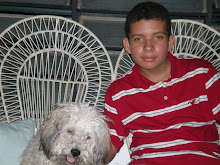Senteces with there were and there was
Senteces with there was:
Was there much noise here?
Was there much wind in the yard?
Was there much contamination in the street?
There wasn't much wind here
There wasn't much wind in the home
There was many table in the yard
There was many pencil in the classroom
There was many phone in the home
There was many book in the school
There was many sock in the flat
Senteces with there were:
Were there any socks in the home
Were there any pencils in the table
Were there any cars in the street
There weren't any cars in the table
There weren't any chairs in the home
There were some tables in the street
There were some books in the school
There were some dogs in the yard
There were some cats in the home
There were some widows in the aparment
Senteces with there is and there are
Senteces with there is:
Is there much music in the home?
Is there much wind in the yard?
Is there much money in the bank?
No, there isn't much water in the home
No, there isn't much wind in the yard
There is many book in the school
There is many treasure in the island
There is many message in the phone
There is many table in the yard
There is many bank in the street
Senteces with there are:
Are they any water in the home?
Are they any money in the bank?
Are they any book in the classroom?
There aren't any money in the bank
There aren't any table in the yard
There are some fruit in the yard
There are some car in the beach
There are some tree in the yard
There are some pencil in the school
There are some music in the CD
Normas del buen hablante y del buen oyente
Normas del buen hablante:
1: Expresarse en forma clara y sencilla
EJEMPLO: Expresarse sin miedo, no echar un cuento sino algo breve
2: Mirar a las personas con quien se habla
EJEMPLO: Mirar siempre al hablante, no hablar ni interrumpir hasta que el hablante halla terminado
3: Utilizar un tono de voz adecuado
EJEMPLO: Hablar con tono de voz adecuado de modo que los oyentes escuchen, no hablar chillón
4: Pronunciar correctamente las palabras
EJEMPLO: Pronunciar las palabras bien para que los oyentes escuchen, hay que articular bien las palabras
5: Pensar bien lo que se vaya a decir
EJEMPLO: Pensar bien antes de decir una tonteria sino los oyentes no entenderan
6: Ser amable y adecuado al hablar
EJEMPLO: Hay que hablar sin insultar a las personas con quienes estamos hablando, aquí hay que utilizar las formulas de cortesía
7: Dejar hablar a los demás cuando tengan una idea que quieran expresar
EJEMPLO: Cuando ya terminemos de hablar, hay que dejar que las demás personas expresen sus ideas, siempre y cuando tengan el derecho de palabra
Normas del buen oyente:
1: Mirar a los ojos del hablante
EJEMPLO: No hay que darle la espalda al hablante, si no lo miramos no entenderemos lo que nos quiere decir
2: Antender a lo que dice
EJEMPLO: Hay que prestarle atención al hablante para entenderlo
3: Evitar interrumpir al hablante
EJEMPLO: No hay que hablar durante el hablante este hablando, hay que esperar que termine para poder hablar
4: Esperar que el hablante termine para responder
EJEMPLO: Esperar que el hablante termine para responder, sin interrumpirlo
5:Hablar cuando ya la otra persona haya terminado su idea
EJEMPLO: Hablar cuando la persona que este expresando su idea, haya terminado
6: Mirar atentamente a la persona con quien se habla
EJEMPLO: Mirar al hablante siempre para que entendamos
Tomado de: albanys

